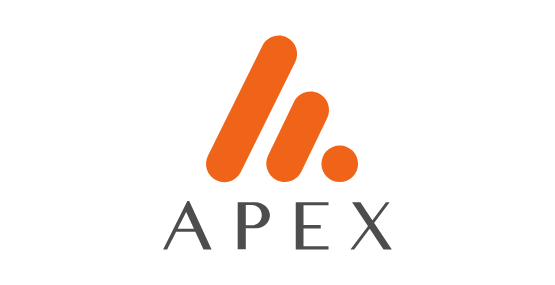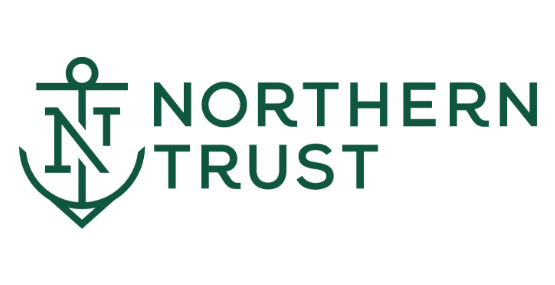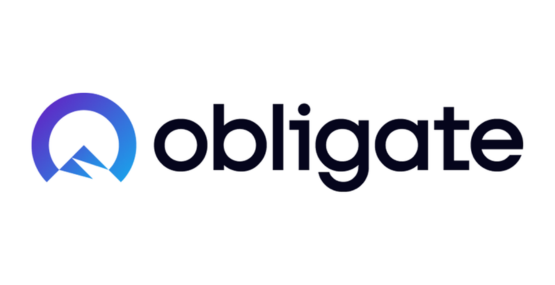

The Future of Finance Tokenisation
Event 2025
Where and When Will it Scale?
October 14, 2025
1 Day Event: 9.00am to 8.00pm
Gold Sponsor

Silver Sponsors


Host

Supporters


Venue:
Reed Smith Offices at 1 Blossom Yard, London E1 6RS
Topics:
-
Are use-cases useless?
-
Are Sandboxes for play or for real?
-
Must legacy mean inertia?
-
Is jurisdictional competition just a race to the bottom?
-
Which can deliver: market forces or the State?
Audience:
Sell-side: Banks and Broker-Dealers; Buy-side: Asset Managers, Fund Platforms and Private Banks; FMIs: CSDs, CCPs, ICSDs; Regulators and Policymakers; Tokenisation Technology Providers; Legal and Compliance Professionals.
Fireside Chat Speakers
Speakers

























Agenda
Click the plus signs to read more about each panel.
Are use-cases useless?
Topics and Questions:
-
Are use-cases failing to communicate success or exaggerating (e.g., massive transaction cost savings or increases in liquidity or distribution) what can be achieved?
-
Is there a scalable use-case we have overlooked (e.g., the global syndicated loan market is reported to be heading for US$1 trillion by the end of the decade)?
-
Does the limited adoption of tokenisation mean use-cases are failing to reduce uncertainty (e.g., failing to demonstrate superiority over the status quo)?
-
Are use-cases failing to distinguish between features (e.g., fractionalisation) and benefits (e.g., liquidity)?
-
Do use-cases over-emphasise technical success at the expense of “socialising” blockchain-based innovation?
-
Adoption is most likely to be driven by persuasive peer example. Are the number and status of the firms involved in use-case experiments too narrow?
-
Are use-cases open to capture by incumbent organisations that wish to retard or defeat innovation (e.g., non-native over native issuance and private over public networks minimise the gains)?
-
Are use-cases starting at the wrong place: with the vendor rather than the emptor?
-
Does the failure of tokenisation use-cases to progress beyond the Decision stage reflect active rejection (“it’s not worth doing”) or passive rejection (“I can’t be bothered”)?
-
In financial markets, every asset class is linked to every other asset class. Does the specificity (or silo-isation) of use-cases make it harder to generate network effects?
-
Do use-cases encourage a fallacious pursuit of the “killer app” in tokenisation (both tokenised collateral and Stablecoins have attracted this label) ?
-
Are DeFi markets and applications so limited in scale, and hard to understand, that they function as a continuous antipathetic set of use-case experiments that undermine the potential of tokenisation?
Panellist:
Emma Lovett – Executive Director; Markets Distributed Ledger Technology at J.P.Morgan Chase
Soren Mortensen – Director Global Financial Markets at IBM
Marcy Dumitrescu – Senior Product Manager at R3
Tobias Wohlfarth – Chief Business Officer at Obligate
Lucas Bruggeman – CEO at BX Swiss
Moderated by Dominic Hobson – Co-founder and Editorial Director at Future of Finance
-
Are Sandboxes for play or for real?
Topics and Questions:
-
Globally, regulatory sandboxes were all the rage five years ago – in 2020 the World Bank identified 73 in 57 jurisdictions – but nobody is counting them now. What has changed?
-
Is it possible that Sandboxes retard innovation?
-
Is it too soon to declare the EU DLT Pilot Regime a failure?
-
What has the Global Financial Innovation Network (GFIN), achieved in the last seven years?
-
The track record of sandboxes in producing fast-growing tokenisation businesses is not stellar. Is this due to poor design or poor conception (e.g., they are an ill-conceived compromise by regulators fearful of innovation)?
-
Do sandboxes fulfil the same role for regulators as Proofs of Concept and Pilot Tests do for regulated financial institutions, i.e., they provide evidence of “doing something” without any intent to get something done?
-
Are “No Action” letters (both the SEC and ESMA issue them) or declaratory rulings (such as those issued by FINMA in Switzerland) more successful in encouraging innovation than Sandboxes?
-
Regulatory uncertainty is the most-cited reason for lack of progress in tokenisation. Do regulatory sandboxes increase or decrease regulatory uncertainty?
-
Why can’t innovators fit their innovations within the existing rules rather than try and change the rules to suit their innovations?
-
Should regulated institutions (such as banks) take more responsibility for shepherding innovators and innovations to market?
Panellist:
Andy Do Tuan – Senior Manager, Business Development at 21X
Prasanth Kalangi – Founder and CEO of Zoniqx
Poonam Ahuja – Director Digital Assets at Commerzbank
Martin Watkins – CEO at Montis Group
Nick Luthwood – Co-Founder and CEO of Liquidity Digital Assets
Moderated by Dominic Hobson – Co-founder and Editorial Director at Future of Finance-
Must legacy mean inertia?
Topics and Questions:
-
Must progress in tokenisation wait for the value of the existing systems to be written off?
-
Can a process be improved incrementally or must it be total?
-
Can standard designs – most obviously, single or common programmable platforms that put, as Larry Fink of BlackRock says, “every stock, every bond…on one general ledger,” accelerate the pace of innovation?
-
Regulated firms continue to be shy of public blockchains. Is a regulatory intervention required and, if so, what form should it take?
-
Regulators are unwilling to take the risk of authorising innovations that are compliant with existing regulations?
-
How confident should we be about the way the English common law is developing in the sphere of digital assets?
-
Is English law now readier than EU or German or French or Swiss law to host tokenised digital assets?
-
Are UNIDROIT and UNCITRAL solving the problem of incompatible jurisdictions for public law and how might the proposed International Jurisdiction Taskforce (IJT) bring private law in the major digital asset jurisdictions into alignment?
-
Is it plausible to build token capabilities in a separate part of the organisation and look to transition customers on to a new platform or must progress be a blend of the old and the new (as in, for example, linking digital wallets with bank accounts)?
-
Do buy-side complaints about the inferiority of tokenised assets by comparison with their traditional counterparts reflect the continuing preference for “digital twin” tokenisations rather than digitally “native” tokenisations?
-
Is it customers, and not competitors, that eventually kill incumbents?
-
Does a “dual strategy” absorb resources “running” the firm rather than “changing” the firm, leading to eventual failure in both the new world and the old?
Panellist:
Carlos Martin Doncel – Head of Digital Assets at Swissquote
Ray Dillet – Head of Financial Institutions – Europe at Bitwise Investments
Sean Mullins – Head of Digital Asset Product Execution – Digital Assets and Financial Markets at Northern Trust
Bruce Jackson – Chief Capital Officer and Senior Partner at MembersCap
Stephan Dreyer – Managing Director at ANNA (Association of National Numbering Agencies)Victor Jung - Managing Director / Head of Digital Assets at Hamilton Lane
Moderated by Mike Manning – Independent-
Is jurisdictional competition just a race to the bottom?
Topics and Questions:
-
Is there any discernible “first mover” advantage in building a legal and regulatory framework for tokenised assets?
-
Is regulation of tokens in different jurisdictions around the world converging on a single model – or are wider “de-globalisation” trends hampering cross-border legal and regulatory alignment?
-
Is the UAE model working in terms of attracting business?
-
Is it right to admire Singapore for integrating regulation and technical innovation?
-
As a pioneer, has Switzerland now fallen behind practice elsewhere?
-
Can Hong Kong become a regional hub for tokenised digital assets?
-
Is the EU falling behind legal and regulatory regimes in other jurisdictions – and in particular the United States and UAE?
-
Is the United Kingdom moving too slowly?
-
Is it too soon to declare the United States a token regulation-free jurisdiction?
-
Is there a risk of a race to the bottom on the licensing and supervision of cryptocurrency activities?
-
Are Stablecoins in danger of becoming a classic instance of a race to the bottom on asset-backing?
-
What sort of business are token-friendly offshore locations attracting now and likely to attract in the future?
-
Are global regulatory bodies such as the FSB, FATF, BCBS and IOSCO losing influence over the development of token law and regulation around the world and, if so, does it matter?
Panellist:
Prab Bajwa – Managing Director, Senior Digital Asset Risk Officer at State Street
Glenn Morgan – Global Digital Assets Lead at Aon
Dr Ian Hunt – Advisor and Author Independent
Thorsten Peisl – Founder and Chief Executive KALYP Technologies
Romin Dabir - Partner at ReedSmith
Moderated by Keith Bear – Fellow at the Centre for Alternative Finance, Judge Business School at the University of Cambridge
-
Which can deliver: market forces or the State?
Topics and Questions:
-
Should governments fund the creation of an open token infrastructure, i.e. a common programmable platform for digital money and digital assets?
-
Is the plethora of blockchain protocols an instance of market failure?
-
Would central banks be the right organisations to build a token infrastructure?
-
What shape should a pro-tokenisation legislative and/or regulatory initiative take?
-
What are the obstacles to getting government bonds issued in tokenised form done at scale?
-
What misguided policy might inadvertently cause tokenisation of equities and bonds to take off?
-
Central bank digital currencies (CBDCs) were once seen as the “killer app” for tokenisation because they would put fiat currencies on-chain. Enthusiasm for CBDCs has declined, but does the argument about their impact on tokenisation still hold?
-
Cryptocurrencies were invented as an alternative to depreciating fiat currencies in both commercial and central bank form but have failed conspicuously to fulfil their original mission. What would a successful private sector digital money look like?
-
What scalable innovations (see staking, lending, Automated Market Makers (AMMs)) have the Decentralised Finance (DeFi) markets produced?
-
Private sector financial market infrastructures are being developed (e.g., RLN/RSN, Canton Network, ClearToken, DSDC). What are the crucial ingredients for success?
-
How can private sector financial market infrastructures help their users transition to a tokenised future?
-
Is a public-private sector collaboration – such as the Global Layer One proposed by the MAS in Singapore – a viable path to a token market infrastructure?
-
At what level inside their company – risk committee, credit committee, main board – do advocates of tokenisation inside large, regulated financial institutions they run into resistance and how can they overcome it?
-
The ultimate catalyst of tokenisation is well-understood: all forms of digital money and digital assets being issued and traded on fully interoperable networks. Which can contribute most to delivering it: market forces or the State?
Panellist:
Agnes Mazurek – Global Head of Business Implementation, Digital Assets at Apex GroupAlex Dunn – Director – Innovation & Strategic Growth Initiatives at Visa
Nisha Surendran – Head of Digital Asset Custody at Citi Investor Services
Barnali Biswal – CEO at Hilbert Group
Moderated by Dominic Hobson – Co-founder and Editorial Director at Future of Finance
-

For more information contact:





























































